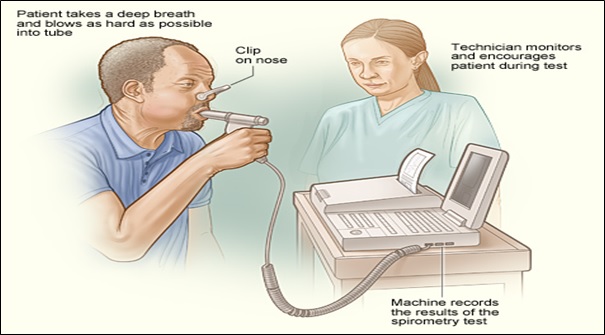What is COPD?
Chronic obstructive pulmonary disease (COPD) is a common, preventable, and treatable chronic lung disease which includes chronic bronchitis and emphysema, is a long-term lung disease that makes it hard to breathe.
- Emphysema: It gradually destroys air sacs in lungs, which interferes with outward airflow.
- Bronchitis: In this condition inflammation and narrowing of the bronchial tubes occurs, which allows mucus to build up in lungs.
A number of procedures cause the airways to become narrow. There may be the obliteration of parts of the lung, mucus blocking the airways, and inflammation and swelling of the airway lining.
COPD and asthma have some common symptoms (cough, wheeze, and difficulty breathing) and some people might have both conditions.
What are the symptoms of Chronic Obstructive Pulmonary Disease?
Common symptoms of COPD advance from mid-life onwards, including:
- Breathlessness or difficulty breathing.
- Chronic cough, often with phlegm.
- Tiredness.
Symptoms could be progressively worse and harder:
- Shortness of breath.
- Wheezing (It is a type of higher-pitched noisy breathing), mainly during exhalations.
- Chest tightness.
- Chronic cough, with or without mucus.
- Need to clear mucus from your lung’s daily basis.
- Frequent colds, flu, or other respiratory infections occurrence.
- Lack of energy.
In later stages of Chronic obstructive pulmonary disease, symptoms might also include:
- Fatigue.
- Swelling of the feet, ankles, or legs.
- Weight loss.
Symptoms are likely to be much worse if you currently smoke or are regularly exposed to secondhand (Passive) smoke.
Risk Factors associated with COPD :
- Tobacco: smoking or passive exposure to second-hand smoke.
- Exposure to dusts, fumes or chemicals.
- Indoor air pollution.
- Biomass fuel (wood, animal dung, crop residue) or coal used for cooking and heating;
- Poor or Abnormal growth in utero, prematurity, and frequent or severe respiratory infections in infantile or childhood that prevent maximum lung growth.
- Asthma in childhood.
- An infrequent genetic disorder called alpha-1 antitrypsin deficiency, which leads to CPOD at a young (Early) age.
How is Chronic Obstructive Pulmonary Disease diagnosed?
COPD is diagnosed using a simple breathing test named as spirometry


How is Chronic Obstructive Pulmonary Disease (COPD) treated?
Patients can take step to reduce symptoms and improve your quality of life are:
- Quit smoking.
- Avoid tobacco smoke and other air pollutants at home and at work.
- Avoid second hand smoke and chemical fumes
- Medicine. Symptoms such as coughing or wheezing can be treated with medicine.
- Pulmonary rehabilitation.
- Prevention and treatment of lung infections.
- Supplemental oxygen. A portable oxygen tank may be needed if blood oxygen levels are low.
- Work with your doctor or dietician to create a healthy eating plan.
- Yoga and Breathing Meditation.
Chronic Obstructive Pulmonary Disease Management Plan
Refer: https://www.lung.org/getmedia/c7657648-a30f-4465-af92-fc762411922e/copd-action-plan.pdf.pdf
Read More:
For HIV: https://pharmasciences.in/hiv-aids/
For IBD: https://pharmasciences.in/explore/inflammatory-bowel-disease-ibd/
Sources:
https://www.who.int/news-room/fact-sheets/detail/chronic-obstructive-pulmonary-disease-(copd)

